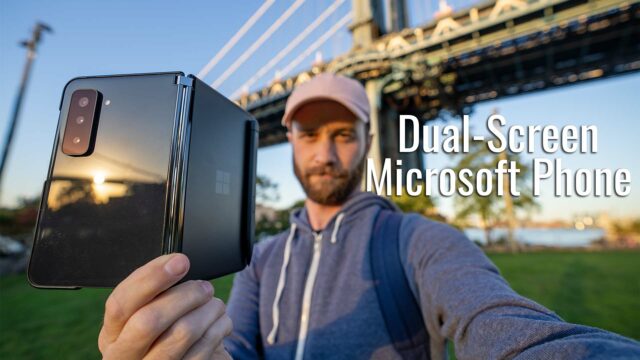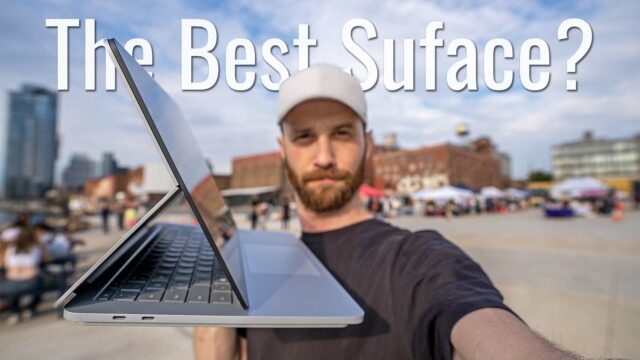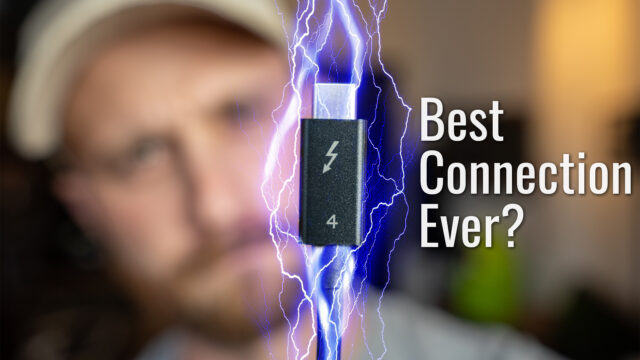Microsoft Surface Pro X Complete Walkthrough: The Best Surface Pro
Microsoft just released the Surface Pro X; the decidedly slicker looking Surface Pro powered by a new type of chipset (that will discuss more in detail in a bit). Microsoft sent me one to check out I figured I’d try and do a complete walkthrough on it for you guys.
If you aren’t familiar, a complete walkthrough on this channel is where I go through every feature I can on a device so that you guys are better prepared should you be in the market to actually buy one.
With that said, there is a lot to go through so let’s get started with the hardware.
Hardware
Like the other devices in the Surface Pro line, the Pro X is a 2-in-1: you buy the tablet part and then choose which keyboard cover you want to attach to it.
In this case, I have the Signature Type Cover that comes with the new Surface Slim Pen that was launched alongside the Pro X for $269.99, but if you don’t need the pen, there is a Type Cover without it for $139.99.
The Pro X only comes in one color: black. It’s made out of anodized aluminum and has a kickstand that has some rigidity to it and can be set in a position anywhere from 0 to 165-degrees and it’ll actually hold it there pretty well.
Compared to the Pro 7 that was also launched at the same time, the new Pro X is 7.3mm thin vs 8.5mm on the Pro 7, is a tad taller (8.2″ vs 7.9), and a hair less wide (11.3″ vs 11.5). But, with those differences in dimensions, we have a larger 13″ 3:2 aspect ratio instead of a 12.3″ 3:2 aspect ratio screen of the Pro 7.
That screen, by the way, has much smaller bezels around it than the Pro 7 and has a 2880×1920 resolution (they added some more pixels to make sure the slightly larger screen had the same 267 dpi that the Pro 7 has).
It is a touch screen display that also supports Surface Pen input (the Slim version or otherwise).
Surrounding that screen we have dual 2W front-facing Dolby Audio capable speakers that are hidden pretty well at the top and sound like this (the Pro 7 has 1.6W speakers, FYI).
We also have a 5MP front-facing camera that is capable of 1080p video that looks and sounds like this.
That camera is also capable of Windows Hello and allows you to unlock the device with your face.
Around the back, we have a rear 10MP camera that can shoot up to 4K resolution and here are some samples.
The Surface Pro X weighs just 1.7 lbs and is one gram less than the i7 version of the Surface Pro 7.
Surface Type Cover and Surface Slim Pen
Now, as with most Surface Pro devices, the Pro X device magnetically connects to the Type Cover (and that magnet is no joke, by the way). The Type Cover has backlit keys and is covered in the Alcantara fabric we’ve come to expect from Microsoft (if you aren’t familiar, it’s a fabric made out of plastic basically so it has a softer feel but is still less prone to stains than actual fabric would).
Normally, you’d type on it slightly elevated and connected to the bottom of the screen, but on the version with the pen, you can pull it down to reveal a small cubby for the new Surface Slim Pen.
This little area is also magnetic (and again is no joke, it’ll even flip the pen around if you try and put it in upside down) and it even charges the pen for you (which is just clever and convenient, for sure).
That pen, when removed from said cubby, automatically brings up two shortcuts: the fullscreen snip which quickly takes a screenshot of the screen (so you can then annotate it with the pen) and the Whiteboard app.
That whiteboard app is very minimalistic (in a good way) and meant to represent the physical tool for which it is named after, of course.
You can use different pen types, choose different colors, add a ruler you can use with your other hand to create precise lines, and you can turn the pen around use the back as an eraser (you have to push the pen against the screen enough that the rear button on it is pressed in to erase and the faster you move on the screen while erasing, the larger the eraser gets).
You can also share the whiteboard using Microsoft Teams or a web-based link and collaborate with others on it.
In the pen settings, you can also change what app launches when that rear button is pressed, double-pressed, and pressed and held.
You can decide what font the handwriting is in, what hand you usually use to write with, and change other settings for the hand-writing recognition in here, as well.
Moving around the device, we have two USB-C ports and our volume rocker on the left and we have a power button and the proprietary Surface charging port on the right.
One thing, glaringly missing, is a 3.5mm audio jack so if you want to use wired headphones, you’ll need to buy a USB-C to 3.5mm dongle or a pair of USB-C headphones.
The charger is a 65W version that can charge the device from 0-80% in about an hour which I can confirm works as advertised. I sort of love that fast charging is becoming more and more popular on laptops and not just phones, by the way.
That battery, by the way, will last up to 13 hours according to Microsoft thanks in a big part to that chipset that we should probably talk about now.
That chipset is a Microsoft Surface SQ1 processor which, in reality, is a Qualcomm Snapdragon 8CX that has been “optimized for Surface Pro X specifically to enhance the performance and user experience for graphics-rich applications.”
This chipset is important to note in this device because it is essentially based on Qualcomm’s Snapdragon mobile processors, the ones you are used to seeing in your flagship phones, and because of that isn’t quite as powerful as say an Intel i7, but has other mobile-like benefits instead like better battery life, integrated Gigabit LTE, instant-on, etc. while still apparently being more powerful than an Intel i5 (according to tests Qualcomm did).
This is also important to note because while it will run most apps you’ll use on a daily basis like Office, Chrome browser, Windows Store apps, and even some of the Adobe Suite (Photoshop and some others have been optimized for it, and Adobe has announced they will bring the rest of the suite as well but there is no time frame just yet), there are some less common apps that might have an issue (i.e. Drive File Stream, a program I use to access my Google Drive in Windows Explorer, just says installation failed).
The reason for this is because the architecture the chipset uses is called ARM64 and long story short, the apps have to either be optimized for that architecture or they have to run in an emulator of sorts within Windows to be able to be used.
Now, to clarify, because of this, it isn’t going to be a powerhouse of a laptop for video editing or gaming, etc. it’s really meant to just be as portable as possible and handle most things you do on a normal basis like the things I just mentioned and, for the most part, it seems to do that at least in my limited testing.
When choosing the device, you can select from either 8GBs of RAM and either a 128GB or 256GB SSD; or 16GBs of RAM and either 256 or 512GB SSD.
Now, that SSD, was mentioned by Microsoft as being removable, but when you check the fine print on the site it says, “Hard drive is not user removable. Hard drive is only removable by skilled technician following Microsoft provided instructions.”
Now, that’s not entirely true, you can remove it yourself and replace it with another one, the thing is though that they used a particular type of SSD (an M.2 2230) that if you look up online to try and buy, well, you can’t as far as I can tell. No place seems to have them. Now, maybe that’ll change as this device potentially becomes more popular, but for now, don’t expect to buy the smallest SSD from Microsoft with the plan to upgrade it yourself to a larger one. (To me, this removability seems more like a security feature for businesses that buy the device for their employees and need to recover data from the drives maybe.)
In the area where you can get to the SSD (which you do so by using a SIM ejector tool to open a metal cover under the kickstand), there is also access to a NanoSim slot that you can use to enable the LTE I mentioned before.
Now, something that is a bit odd to me is that one of the biggest benefits of the chipset Microsoft is using in here is that according to Qualcomm (the makers of it) it can get a lot more than 13 hours of battery life. And, indeed, Samsung just made a laptop with the same chipset (that is called the Galaxy Book S but isn’t out yet) that they list 23 hours of battery life on.
Now, for whatever reason, it seems Microsoft apparently decided to put in a smaller battery maybe in order to make it lighter and thinner instead of opting for the crazy amount of battery life the chipset seems capable of. I wish they didn’t but at 13 hours it is still really good for battery (and I can confirm to that being a pretty accurate real-world estimate in my own use with it).
Software
For software, we’re running Windows 10 Home with our usual Microsoft bloatware game or two like Farm Heroes Saga here but they are easily removed by right-clicking and selecting uninstall.
Really quickly, here are some benchmarks for anyone interested in those.
The Surface Pro X is available for purchase right now and starts at $999 for the 8GB/128GB model and goes up to $1799 for the 16GB/512GB model.
Honestly, I’ve never really been a huge fan of the Pro lineup form factor. I’d always rather just have my laptop be a clamshell. But, with the Surface Pro X and it’s much longer battery life, much nicer design (even over the regular Pro models, I think), and the way the pen works, I find myself even using it without the keyboard attached which I normally don’t do.
Because of this though, I find myself thinking of it as a really capable tablet with a keyboard, LTE, pen, etc. rather than a 2-in-1 PC and in that respect, I think it might actually give the iPad Pro 12.9″ a run for its money.
Let me know what you guys think in the comments below, subscribe to my weekly email newsletter, and as always, thanks for watching.




